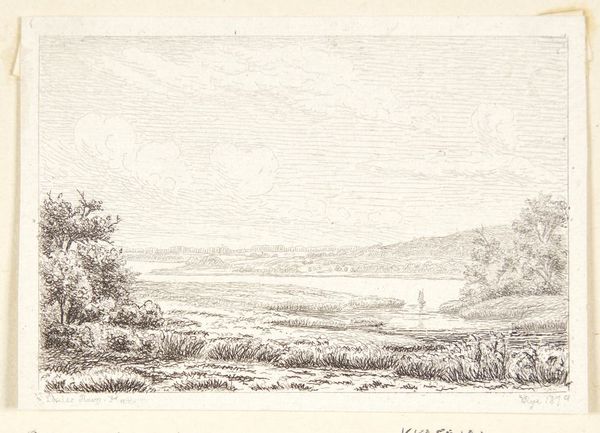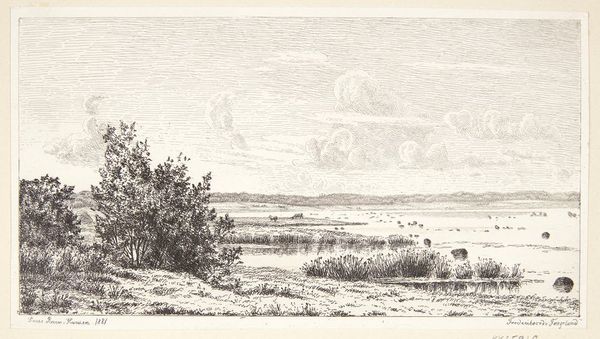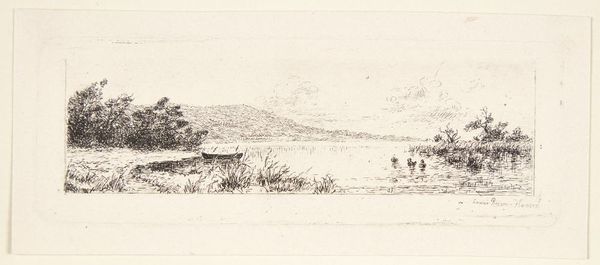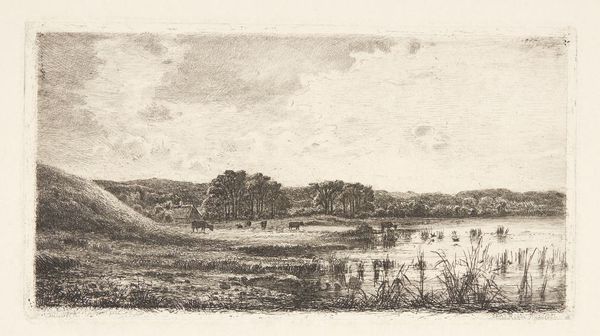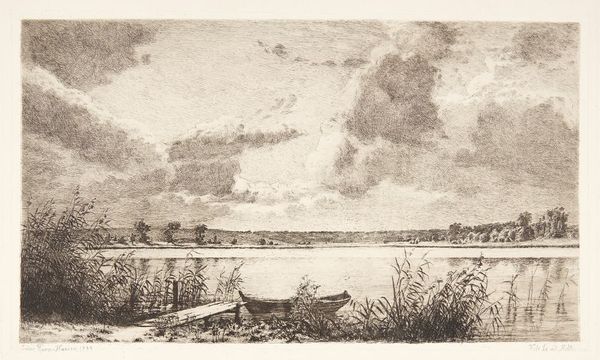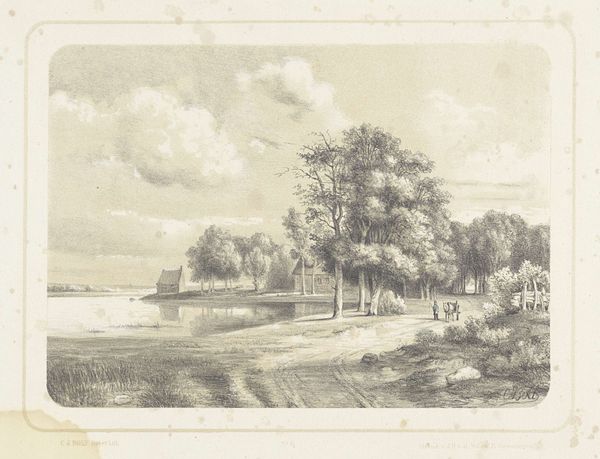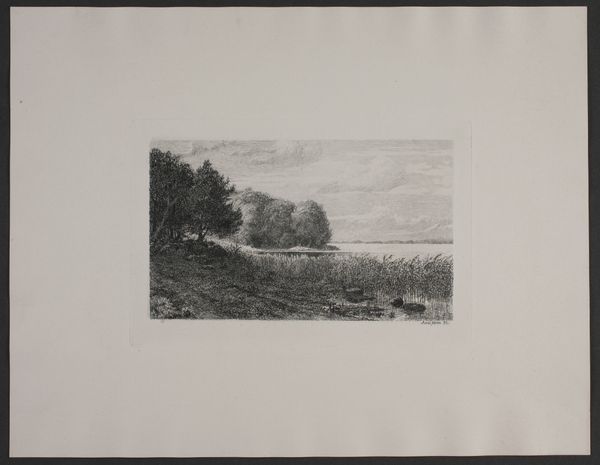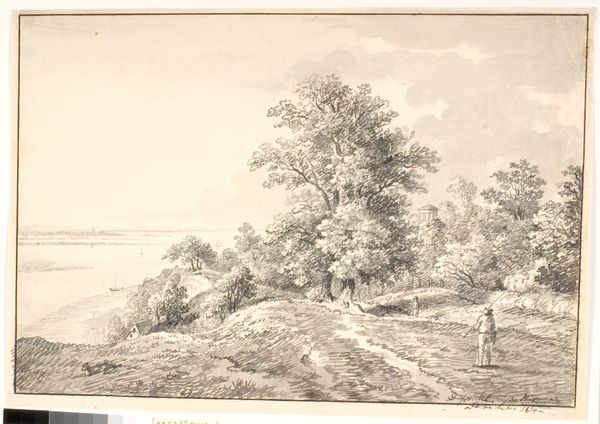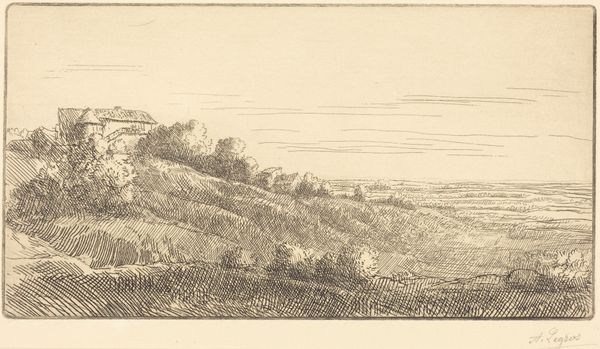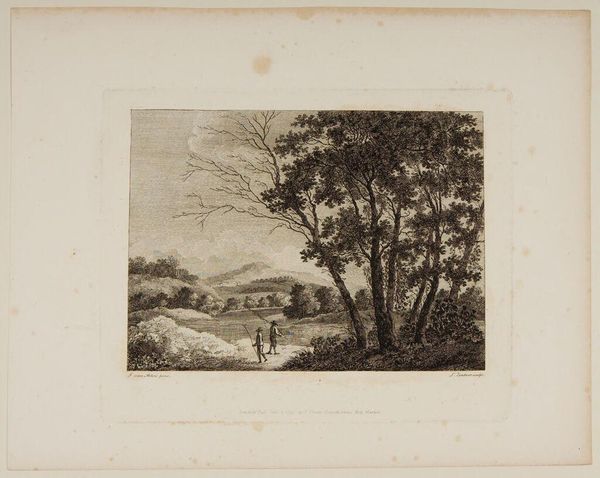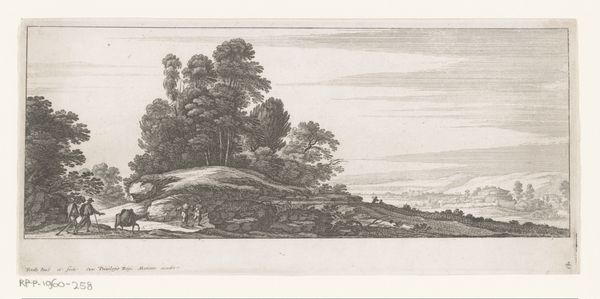
print, etching
# print
#
etching
#
landscape
#
etching
#
realism
Dimensions: 80 mm (height) x 129 mm (width) (plademål)
Editor: This is Louise Ravn-Hansen's "Rye Mølle Sø," an etching from 1879, currently held at the SMK. There’s something so peaceful about it; it reminds me of simpler times. What stands out to you about this particular landscape etching? Curator: What interests me is how Ravn-Hansen uses this traditionally accessible medium of etching to portray the Danish landscape at a time of significant national identity formation. Landscape art often served to reinforce notions of belonging and cultural pride. Editor: So, the image of the land itself is like a political statement? Curator: Precisely. Consider the date: 1879. Denmark had recently experienced territorial losses. Images like this, of the serene Danish countryside, could evoke a sense of continuity and resilience amidst political upheaval. Editor: That's a clever way to look at it! Were landscapes always used this way, or was there a shift? Curator: Good question. While landscapes have long held symbolic weight, the *intensity* with which they were consumed and circulated during periods of national crisis amplified their political resonance. Think about who was commissioning, buying, and displaying these etchings. It tells us much about the intended audience and the social function of the art. Editor: It is surprising to think that an etching could hold so much cultural significance. I appreciate how it goes beyond just being pretty. Curator: Indeed. And perhaps we should consider how national narratives are built, not just from grand oil paintings hung in palaces, but also through more quotidian artworks accessible to a wider public. Editor: Thanks. It provides an important insight into considering art beyond just face value. Curator: It makes you think, doesn’t it? Art as a reflection and shaper of societal values.
Comments
No comments
Be the first to comment and join the conversation on the ultimate creative platform.
